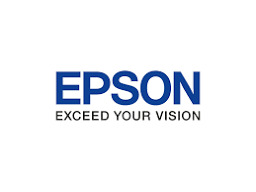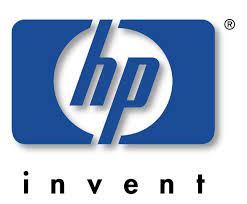SUBLIMATION PRINTERS HUB
SUBLIMATION PRINTERS REVIEWS, BUYING GUIDES, HOW-TOS, TIPS & MORE







Why Sublimation Printers HUB?
Reliable
We only do provide processed information about Sublimation Printers after so many research breakdown.
Environmentally Conscious
The technique emits no toxic emissions and does not require the use of chemicals, making it a more environmentally friendly printing alternative.
Durability
The permanence of sublimation printing is well recognised. The patterns are resistant to wear and tear, making them ideal for things that are handled, washed, or exposed to the elements on a frequent basis.
Prints that are vibrant and last a long time
Prints produced by sublimation printing are extraordinarily vivid and high-resolution. The ink is embedded into the material rather than lying on top of it, resulting in graphics that resist fading and retain their brilliance over time.
Detailed and High Resolution:
Prints with great degrees of detail and resolution can be produced with sublimation printers. As a result, they are perfect for applications requiring complicated designs and precise details, such as photography prints or personalized products.
Personalization and customization
Sublimation printing lends itself well to customization and personalization. Businesses can simply create one-of-a-kind items or small batches with distinctive designs that appeal to individual client preferences.
Soft Touch
Sublimation prints, unlike other printing technologies, have a velvety feel since the ink is absorbed into the fabric or material. This is especially appealing in applications such as personalized clothes, where a pleasant and natural feel is essential.
Material versatility
Sublimation printing is not only confined to paper; it may also be utilized on polyester fabrics, ceramics, metals, and some polymers. Because of its adaptability, it is suited for a wide range of uses, from garments and accessories to promotional items.
no color restrictions
Sublimation printing can reproduce a wide range of colors, including gradients and subtle color variations. This adaptability is especially useful when building visually appealing and sophisticated designs.

Author: Michael L.
I have over 15 years of hands-on experience in sublimation printing technology. After managing production and operations for a commercial printing company for several years, he decided to strike out on his own as a consultant and writer specializing in sublimation and digital printing.
What is Sublimation Printer?
A sublimation printer is a printer that uses the sublimation printing technique to produce high-quality, full-color prints on a variety of materials, particularly textiles and coated substrates.
Sublimation printing is a novel process in which a solid substance (sublimation ink) is converted directly into a gas without going through the liquid phase.
Sublimation printers employ inks that are not the same as standard printer inks. These inks include solid dye particles that, when heated, sublimate into a gas, allowing for the transfer of vibrant colors onto various surfaces.


What Kind of Printer Do You Need For Sublimation?
Sublimation printing necessitates the use of a specialized printer built to handle the sublimation process. Sublimation printers, unlike standard inkjet or laser printers, use heat-sensitive ink that changes from a solid to a gas without going through a liquid phase.
This distinguishing feature enables the ink to permeate the surface of specifically coated substrates, such as polyester cloth or polymer-coated products, resulting in brilliant and long-lasting prints.
Sublimation Vs Screen Printing Vs Dye Sublimation
Sublimation printing is a digital process that transfers dye onto materials using heat and pressure. The image is first printed onto sublimation paper with specialized inks in this procedure.
Screen printing, on the other hand, is a conventional technique that involves forcing ink through a mesh screen onto the substrate.
Each colour in the pattern requires its own stencil (screen), and the final image is created by forcing ink through the open sections of the screen.

FAQ’s:
Sublimation is a digital printing technology that enables for the permanent printing of full-color graphics and pictures onto various polymer-coated surfaces.
It employs a specific printing technology with the following main characteristics:
1) Using a high-heat sublimation printer, specially developed sublimation inks comprising dye mixes are printed onto prepared transfer paper.
2) The transfer paper is laid on top of polymer-coated surfaces such as ceramics, metal, or polyester fabric and pushed together using heat and pressure approximately 400°F.
3) When heated sufficiently, the colors in sublimation ink transform into a gas that permeates and infuses into the polymers on the material’s surface. This is where the term “sublimation” originates from – the shift from solid to gas.
4) As the product cools, the gaseous dyes solidify again, now permanently lodged at a molecular link within the polymer covering. This results in brilliant, long-lasting prints that will not chip, fade, or peel from the surface over time.
Sublimation, in summary, employs a delicate combination of specialized inks, controlled heat settings, and polymer technology to “gasify” dye particles, causing them to become one with the print surface, resulting in long-lasting, high-quality printed graphics. Brands and customers appreciate the ability to customize shirts, mugs, phone covers, signs, and other items.
The following are the essential qualities of a high-quality dye-sublimation printer:
High Print Resolution – To guarantee clear, photo-quality image transfers, a specialized sublimation printer needs to be able to print at a high DPI resolution of at least 1440 x 1440 DPI.
Dye-Based Inks – The printer needs to use special dye-based inks that, when heated, evaporate and permeate materials coated in polymers. Pigments from standard ink will float on top of the surface.
Sturdy Printhead – To handle thick, gel-based dye-sublimation inks without clogging, the printer requires a sturdy printhead. For extended use, the printhead should likewise be user replaceable.
Precision Ink System – To hold rich color dye reserves for vibrant graphic imprints, it should have a multi-ink cartridge system with 4–8 ink ports. It is advised to use stable, large capacity cartridges.
High Density Outputs – For rich, dense color transfer, a good sublimation printer optimizes the levels of ink saturation in the printer drivers and software.
Thick Media Feeding System – Printers using sublimation technology ought to effortlessly feed and print on transfer papers that are thicker and can accommodate a greater density of liquid dye inks.
ICC Profiles – Accurate and consistent color printing on various transfer papers and poly-coated blanks is ensured by integration with industry-leading color ICC profiles for sublimation.
Through the use of heat transfer dye, the proper sublimation-specific printer can produce stunning, vivid graphics for use on phone cases, mugs, and clothing.
The primary distinctions between sublimation printing and DTF (direct-to-film) printing revolve around the inks used, printer types required, printable materials, and durability of produced products:
Inks:
Sublimation employs dye-based inks that evaporate when heated.
DTF use typical pigment-based inks that remain solid.
Printers:
Sublimation necessitates the use of dye-sublimation printers at high temperatures.
DTF is compatible with standard desktop inkjet printers.
Surfaces for printing:
Sublimation is only effective on polymer-coated surfaces such as ceramics, metals, and polyester fabrics.
DTF can print on natural fabrics such as cotton without the use of polymer coatings.
Durability:
Sublimation attaches dyes directly inside the substrate, resulting in incredibly long-lasting pictures.
Because DTF is applied to materials, it is not as long-lasting as sublimation.
To summarize, sublimation infuses color deeper by vaporizing dyes, but it necessitates specialized equipment and polymer substrates. DTF relies on simple ink adhesion to work on most materials but does not produce as durable or colorful effects as sublimation.
DTF, or direct-to-film, printing is inferior to sublimation in terms of overall quality:
Sublimation excels in the following crucial areas over DTF printing:
Durability – Rather than merely floating on the surface, dyes sublimate to form a permanent link with the substrate. As a result, over years, the prints will be able to tolerate far greater wear and tear.
Vibrancy – Compared to the topical ink layer applied by DTF, the sublimation infusion technique results in prints with increased colour vibrancy and accurate reproduction.
Photo Realism – While DTF restricted to ink adhesion shows to be relatively lower-fidelity for picture reproduction, the transfer depth available with sublimation enables for truer photographic imagery.
Broader Substrate Compatibility – Sublimation adheres to any polymer-coated surface, offering greater product opportunities in comparison to DTF, primarily for textiles.
The drawbacks of sublimation include:
1. Needs more sophisticated tools and inks
2. Does not work on pure cotton; only polymer-coated items
3. Overall more complicated than DTF procedures
However, assuming the situation permits pursuing dye sublimation paths in the first place, sublimation typically outperforms DTF in most quality criteria due to its long-lasting colorful results and robust performance.
Cricut machines are not equipped with the capability to produce genuine dye-sublimation prints. Here is a brief explanation of why:
1) Standard pigment ink is utilized by Cricut printers as opposed to the dye-based sublimation ink required for infusion.
2) The maximum print resolution supported by the Cricut is 1200 DPI, whereas sublimation requires 1440 DPI or higher for optimal results.
3) Cricut marker print devices are prone to clogging and lack the dependability required for frequent dye-sub printing.
4) In order to prevent nozzle clogs and viscosity issues with viscous gel sublimation inks, Cricuts lack precise temperature controls.
5) The Cricut’s limited colour cartridge ports limit the colour gamut that can be achieved, in contrast to sublimation printers that feature 6-8 reservoirs.
Although Cricuts perform admirably for tasks such as cutting paper and creating customizable apparel using accessory heat presses, the printer hardware currently lacks the necessary engineering capabilities to perform true high-fidelity dye sublimation. Sustained high-temperature precision ink delivery and alignment presents reliability concerns for the Cricut ecosystem at the enthusiast level.
Therefore, a dedicated dye-sublimation printer and heat press system that is specifically designed for infusion and polymer bonding are still required to achieve vibrant, long-lasting full-color sublimation.3)







